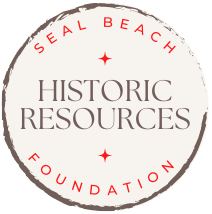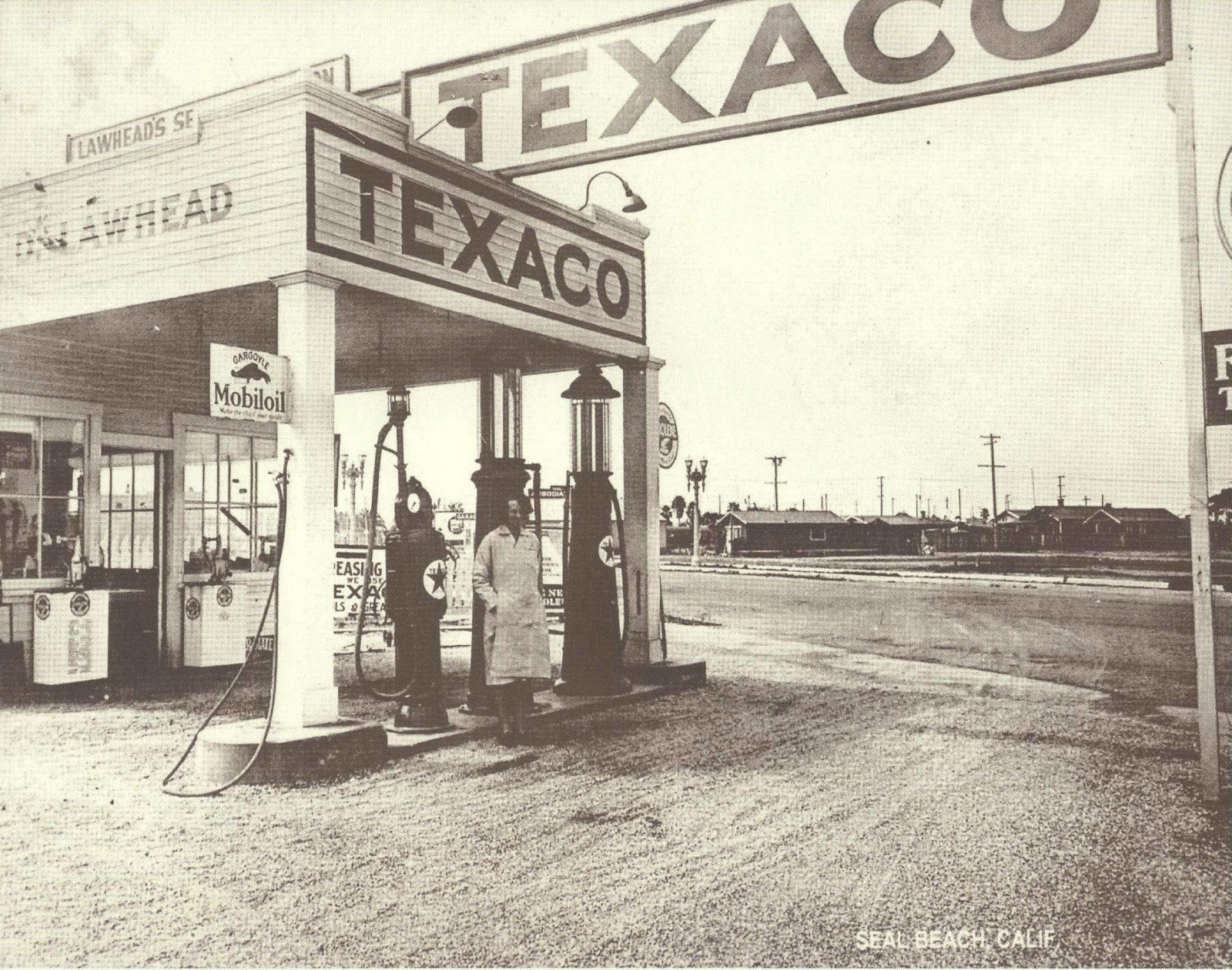Douglas and Stewart Lawhead
Interview by Libby Appelgate
The brothers, Douglas and Stewart stories of Seal Beach go back to 1919 when their grandparents moved here. They are now 93 and 91 years old respectively. They appear to be in vigorous good health. They say Seal Beach climate kept them healthy. Douglas was born in Los Angeles but moved here when
he was 6 months old. Stewart was born in Seal Beach in the year of 1921.
DOUGLAS: We lived on 111 – 11th Street until 1930 and then moved to 111 – 14th Street. My family sold the place after WWII. After I graduated from Seal Beach Grammar School, we were bused from Seal Beach to Huntington Beach High School. I was a swimmer in high school so I decided to go to Fullerton Junior College because they had a good swimming program. Then I transferred to UCLA and went there for one year until 1940, I went into the service as a flying cadet and learned how to become a pilot.
While living in Seal Beach during the 20’s, there weren’t very many houses. Ocean Ave. was quite barren from Main St. down to 17th Street. The [Anaheim] Bay area was more built-up than the main part of town because the Joy Zone took up all the property all along there. The Derby roller coaster took up a lot of room. There weren’t very many houses but along 14th Street on the beach, there was what they called Tent City that took up about one block.
My aunt was a teacher in the Seal Beach Grammar School there on Pacific Coast Highway. That was the only school in Seal Beach. I graduated as an 8th grader. It was a kindergarten through 8th-grade school.
There was a grocery store on the corner of Main St. and Central and across the street was a drugstore that Mr. Beno owned. There used to be a Masonic Lodge on Main St. Memories of the Joy Zone are still with me and as a youngster, I rode the roller coaster before they closed it. It was closed for quite a few years and we could see it all day long doing no business. Earlier, when we were young, we could see that people would come down on the Red Car during the weekends. It was quite a place and there was a lot of
parking for people to park their cars. They didn’t all come down on the Red Car. But we were little kids during the time it was running so we didn’t get down to the beach. We couldn’t go down there, our mothers wouldn’t let us go down there by ourselves. But there were never 20,000 people down there. Not that many came on the weekends unless they had a big celebration of some kind.
J. C. Ord was living on 10th Street and Central Ave., Mr. Proctor was living on 10th and Electric Ave., Philip Stanton lived on 1st and Ocean Ave. in the 20’s in their big houses. Seal Beach had a nice Dance Pavilion which was a big attraction and had a big restaurant called the Jewel City Café. One on one side of the pier and one on the other. That was a great place to come down to visit. By the time we got to the age that we could go down there, it was gone.
Our parents didn’t go there but we did play on the abandoned roller coaster cars in the 1930’s. On the last little dip of the Derby roller coaster we rode down and had to push it back up. We would do this until the police came around and told us to get off but we got off and after they left, we got back on again. The Chief of Police sons, Larry Howard and his older brother Ed were always with us. About five or six of us would normally go down there.
Basically, a roller coaster is about three cars and we separated them so it was just one-third of the bunch. The safety jack would not come down the hill so we tied that up so we could go up the hill and come down the same hill and it wouldn’t stop, it would just keep going. We would get the guys rolling real fast to go down the hill and if we got it going real fast, we could go up and down the next hill and of course the law was always ready to chase us out of there. It’s a wonder that all the times we did it, no one ever got hurt. We were lucky.
In the mid 20’s nothing much was going on down there. Ocean Ave. had very few homes scattered along there. I am talking about from Main St. towards Anaheim Bay. There weren’t too many homes built on the other side either. We lived on 11th and then 14th Street and that is where there were just a few places with many empty lots.
We had a good time in Seal Beach. Our main activity was swimming because our house was one block from the ocean and all we had to do was to walk under the roller coaster and we were right on the beach. We learned to swim and did a lot of surfboarding. We were teenagers and we surfed with not the kind of boards they use today but big wooden boards that were about twelve feet long that we surfed on around 1936 – 1937. We were sixteen and seventeen. I was a lifeguard in Seal Beach for one year and the next year I lifeguarded in Long Beach.
Rum running was during prohibition from 1919 to 1933 and the runners came into Anaheim Bay and dumped their liquor there because there were a couple of pool halls on Main Street. I really don’t know because I was too young but I heard about it.
But the story about the earthquake is always something we talked about. I was on the bus coming home from Huntington Beach High School when it hit and the Department of Water and Power had a problem with its high tower. I think it was over 300 feet high and they had to cut it in half to keep it from falling down. Some people had damage in their homes and camped outside so nothing could fall on them. We just stayed in the house.”
We played softball at the grammar school and would choose up sides and played in the vacant lots. Our grandparents (the Lawheads) moved here in 1917 and built the house on 11th. Our dad, D. D. Lawhead owned a gas station on PCH and Main St.
STEWART: When I was eighteen James Zoeter’s dad had a garage where we built three paddleboards. It was about a forty-pound board and Mr. Zoeter had the saws and equipment we needed. We rode those things all summer long.
DOUGLAS: I went into the Army Air Corps in 1940 and I became a second lieutenant in 1941 just before the war and I was flying out of San Bernardino at March Field and flying a P-40, a single-engine fighter plane. I was flying all around here, then in December the Japanese struck Pearl Harbor. We had a few problems along the coast when the Japanese shelled the beach area from a submarine. My brother said he flew P-38’s but I flew one from San Francisco to Connecticut with others following and went across the Atlantic. We flew from Windsor Lochs and went into Greenland and because of the weather, I had to spend eighteen days in Greenland. Then flew over into Iceland and spent eighteen months in Iceland. All this time our parents are waiting for us to come home. They had to run that service station.
When we came home in 1944 the Navy had moved into our favorite swimming hole at Anaheim Landing. As you come over the bridge to the left is where we did a lot of swimming. When I was a lifeguard, the first rescue I made was in the channel and the channel had steep grades where this woman was standing there she took a step off she fell in seven feet of water and she couldn’t swim so pulled her in and saved her life.
Our father was on the Seal Beach City Council from 1952 -1956 and became the Mayor.

